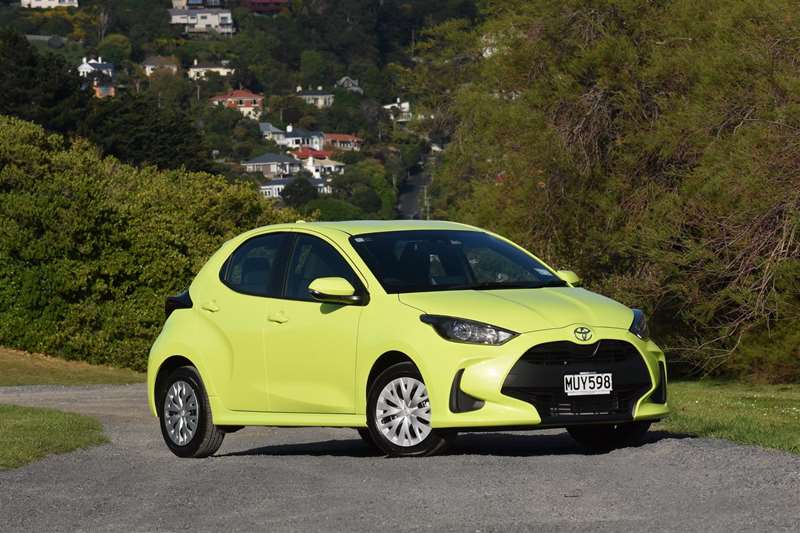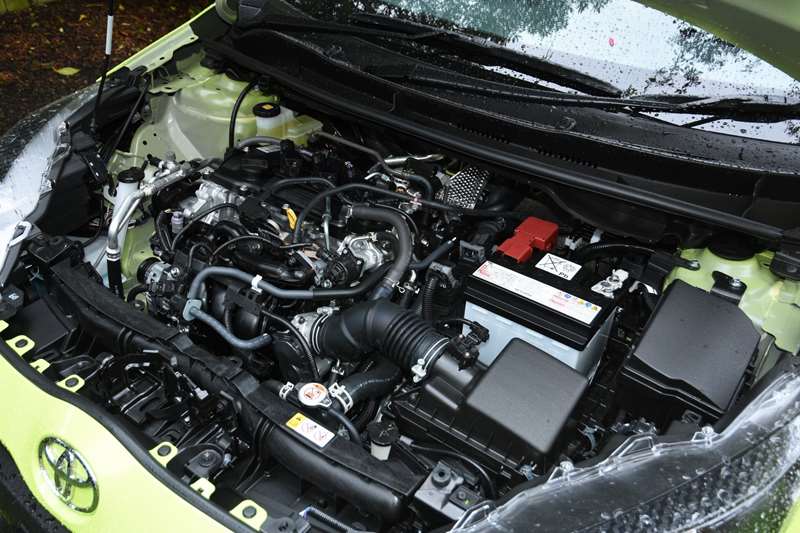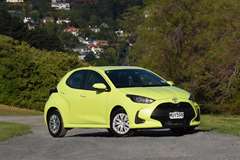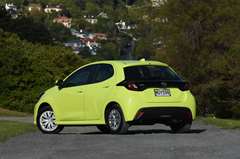There is nothing wrong, writes DavidThomson, with starting at the bottom of the ladder when it comes to the all-new, fourth-generation Toyota Yaris.
What’s new?
From Starlet to Echo to Yaris, small Toyota hatchbacks have carved out an important niche in the New Zealand motoring scene over the past 40 years. Never as prominent as the larger Corolla, but still selling in good numbers, and serving as everything from grandma’s shopping basket to first cars, budget rentals and even (back in Starlet days) a perennial class-winner on the national rally scene.
Launched a couple of months ago, the latest Yaris pushes forward on the same broad front: the standard petrol and hybrid models certainly fit the shopping basket, first time buyer and rental car bill; while at the other end of the Yaris spectrum, the GR is a 192kW four-wheel drive turbocharged machine inspired by a proven winner on the World Rally Championship scene.
While the GR is a Yaris like none seen here before, and the Yaris Cross (a high-riding crossover version) will take the model into new and likely high-demand territory, the rest of the latest line-up represents a collective fresh take on a familiar Yaris theme.
This, the fourth generation, is the first vehicle to utilise the most recent iteration of the Toyota New Global Architecture (TNGA), a set of related modular car platforms that first appeared for larger models from Toyota and Lexus in 2015.
There’s familiarity in the mainstay models’ choice between small-capacity petrol and hybrid drivetrains, albeit with new motors on the scene. The new entry-level petrol engine is an inline three-cylinder unit, running in the fuel-efficient Atkinson Cycle combustion mode, and delivering peak outputs of 88kW and 145Nm. The hybrid musters similar outputs — 85kW and 141Nm
— by combining a re-tuned version of the same petrol engine with a dual motor transaxle.
This test covers the petrol 1.5-litre, sampled in entry-level $25,990 GX guise. The same GX specification is offered with the hybrid powertrain for $27,990, while pricing for the premium GR starts at $29,990 for the petrol version.
What’s it look like?
The new Yaris is shorter and lower than its predecessor, but wider and longer in the wheelbase. With these quite different proportions, the latest model has a much more planted look compared to the somewhat upright vehicle it has replaced.
Aptly christened ‘‘the aphid’’ by a visiting friend, the GX test car stood out from the crowd in part due to its vivid lime green paint scheme. A largely unadorned aphid too, sitting on 15-inch steel wheels and sensible 185/60 tyres, but an attractive base-model compact hatchback even so.
Flanked by bi-beam halogen headlights, the broad, expressive nose is the most distinctive aspect of the GX’s styling. Lightly bulged wheel arches are prominent, and a scalloped sculpting line running forward from the leading edge of the tail-lights adds further dynamism to the vehicle’s flanks. The integration of those rear lights into a single styling strip that runs across
the base of the hatchback glass is another nice touch.
What’s it like inside?
Trimmed in dark tones, the GX interior feels a trifle sombre. That said, the front of the cabin is roomy, and a visual lift is provided by some interesting curves to the dash and a distinctive duel dial set-up within the main instrument cluster.
A preponderance of hard plastic surfacing is not unexpected at entry level, but the GX would benefit from rubberised surfaces for its various storage cubbies to prevent loose items sliding about when on the move. The seven-inch centre touchscreen is prominent on the centre of the dash, while the GX’s instrument cluster takes an additional digital display between the main analogue dials.
Rake and reach steering wheel adjustment is provisioned. Trimmed in fabric with lightly patterned cushions, the front seats are comfortable and supportive, and the drivers’ seat adjusts for height. Helped by the Yaris’s compact dimensions and pillar layout, visibility from the front of the cabin is very good.
The rear of the cabin is adequate rather than spectacular in terms of space and taller people may find themselves wishing for a shade more head and knee room.
Boot space, at 286-litres, is similarly adequate and all but identical to the previous model, although the cargo area features a handy variable-height boot floor.
What comes as standard?
Hats off to Toyota for putting safety first when it comes to equipment levels on the Yaris range. Even the GX takes adaptive radar cruise control and lane-keeping assist, and its pre-collision and accident avoidance system includes autonomous emergency braking, pedestrian and cyclist detection and intersection turn assist. Auto dipping headlights, a reversing camera, speed
sign recognition and display are also provided, and the airbag suite includes a centre aisle airbag that deploys between the driver and front passenger in a side-on impact.
The technology suite is also substantially improved, notably through the inclusion of Apple CarPlay and Android Auto smartphone integration. While not state-of-the-art in terms of functionality or graphics, the touchscreen system works well enough. Wireless connectivity is straightforward, but the provision of just one USB plug-in point seems a little stingy. The six-speaker sound system provides acceptable audio quality, and the single-zone manual air-conditioning is entirely adequate, too.
While the GX is certainly well appointed for an entry level model, the premium GR model carries plenty of extra kit. Its additional items include 16-inch alloys, LED headlights, blind-spot monitoring, front and rear parking sensors, push button start, fully digital instrument cluster, a head-up display, climate control, satellite navigation and a leather-rimmed steering wheel.
What’s it like to drive?
Used day-to-day as a round-town runabout, the Yaris GX combines utter practicality with a comfortable yet nimble demeanour.
Key controls (and notably the steering) are light to use, but accurate in their responses. Mechanical refinement does suffer a trifle conquering steeper hills, but the engine goes about its business during urban driving with a pleasing three-cylinder thrum, and the continuously variable transmission is smooth and quite unobtrusive at urban speeds. Thanks to its compact dimensions and minimal overhangs, parking is a breeze.
While it wouldn’t be my vehicle of choice for long-distance driving, the test car dispatched the open-road segment of the test route in a thoroughly competent manner. Its adaptive radar cruise control was simple to activate and effective in operation, as was the lane-keeping system. Relatively high noise levels on coarse-chip surfaces and the performance and refinement limitations of a modestly-powerful engine and CVT transmission are the GX’s two open-road minuses.=
Threading this new Yaris through the twists and turns of a winding tarmac backroad is also a far more rewarding experience than one might expect. It is certainly no sports car, and nor is it objectively quick, but within the limits imposed by a suspension set for ride comfort, the GX petrol car handles pretty well.
An easy and accurate responsiveness to steering inputs and an ability to maintain dynamic composure speak volumes for the quality of the TNGA platform. As well as helping make this GX Yaris surprising fun to drive briskly, this suggests the upcoming and far more potent turbo four-wheel drive Yaris GR could be a very special machine.
Last and not least, a note on economy. The petrol Yaris is rated at 4.9l/100km, compared to 3.3l/100km for the hybrid. I managed 5.3l/100km on test.
Verdict
Sharply styled inside and out, the new Yaris GX is a practical and fun urban runabout, with more to offer beyond city limits than might be expected.
Photos: David Thomson












